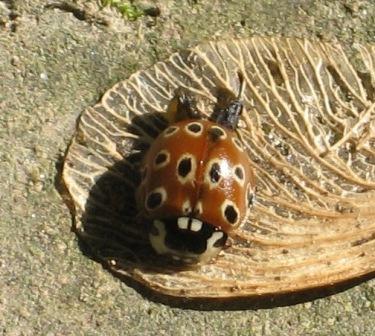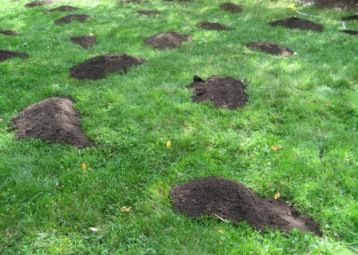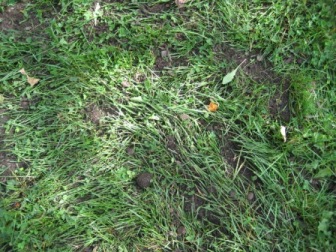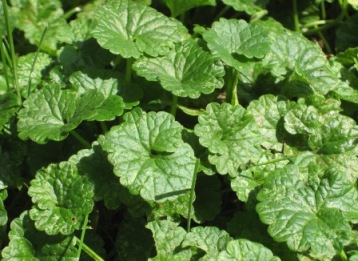No, not the kind you’re thinking.
What I’m talking about is animals’ right to be viewed as animals.
The subject is near & dear to my heart, and it’s on my mind today because it was touched upon in the Weekend edition of the Wall Street Journal.
The article, “Wild Kingdom,” by James Sterba (subscription required), gives an overview of the current state of human-wildlife relations in the Orlando area, but the situation there is hardly atypical. As a culture, we’re hemorrhaging the savvy we once had about wild creatures — and no, being able to recite facts we’ve gleaned from books or documentaries doesn’t count. On the contrary, learning about wildlife from books and documentaries, instead of through first-hand experience, is one of the problems.
We’re Bambi-izing nature. We view animals as little humans and interpret their actions through the lenses of human ethics and personality — which, perversely enough, turns out to be an act of supreme selfishness.
It leads to situations like the one Sterba relates in his article, where people toss bread to non-native Muscovy ducks that have set up camp on Lake Lilly, a suburban park, but “hate” the otters that show up to feed on them.
“We hate the otters,” said a retiree named Florence, who wouldn’t give her last name. She and her husband, Don, walk around the lake for exercise. “We gave names to every duck. Now, half are dead.” Asked if they named the otters, she said, “Yes, but you couldn’t print those names.”
Now the town where the park is located has hired a company to trap and remove the otters.
I’m not against removing, even euthanizing problem wildlife. But what’s happening is that people often create the problem. Another example from the article: people feed Florida Black Bears. This teaches the bears to look for people for hand-outs, so that even if you relocate them, they just come back. And once a bear has been documented as bothering people three times, it’s killed.
Even when animals don’t need to be euthanized, relocating them may be a death sentence anyway. The article quotes from the Florida wildlife commission Web site as follows:
“It’s rare that relocated animals have a good chance of survival, and moving them may even effect the survival of animals in their new ‘home.’ ” Relocated animals are already stressed from their ordeals, often can’t find food and shelter in their new environments, fight with and can spread disease to local critters already there, it says.
So what’s the answer?
Let’s start with what the answer is not — and that’s overreacting to so-called “sprawl.” People blame it for the increased contact between people and wildlife, but it’s only partly the cause–something you’d know if you grew up in the rural Northeast, like I did, where it’s pretty obvious that land once cleared for farming has now regrown as forest.
While sprawl is moving out, the forests in which many species once flourished is moving in, covering over millions of acres of abandoned farmland that once served as a buffer.
When I was a kid, the “woods” behind my parents’ house still showed obvious traces of having been farmland: the tumbled stone walls, the piles of rocks from where someone once cleared the land to plow, the predominance of trees like ash which are characteristic of first-growth forest, and of wild apples, suggesting there had been an orchard in the vicinity at one time.
Today, it’s almost unrecognizable, thicker, shadier; the apples have pretty much died out, the rock piles are disappearing under accumulating leaf litter. It’s begun to look like a real forest rather than scrub land.
What’s more, we’re also inadvertently creating habitat with our homes and landscaping:
. . . much modern sprawl is built, unconsciously, to be wildlife-friendly — what wildlife biologists call “enhanced habitat,” with more food, shelter, water, hiding places and protection from predators than exist in the wild . . .
In the wild, home is a hole in a dead tree. In Orlando, the dead tree has been cut into lumber and used to build a house with easy access to the attic — a veritable McMansion for raccoons, squirrels and roof rats. Ubiquitous air-conditioners all have drip pans — a ready source of water. New suburban landscapes tend to have more critter-friendly “edges” — patches of trees, shrubbery, lawns, fences, roadsides — than can be found in many wild settings.
My neighborhood is a perfect example: lots of handy cover for critters to move about, plenty of spots to hide and build dens. Consequently, we have not only birds and squirrels, but also rabbits, skunks, possums, fox, deer, and coyote. It’s practically the identical mix of native North American fauna that the colonists found when they first settled this part of the world — all that’s missing is bear and mountain lions, and they’re closer than most people realize.
So what’s the answer?
I wish I knew. I honestly don’t see how we can make intelligent, well-reasoned decisions about managing our native wildlife when a growing majority of Americans, to paraphrase the article, now treat their pets like children and wild animals like pets.
Animals feel emotions, they are fascinating, they have complex brains, they enrich our experience. But particularly as regards wild animals, they live in a parallel world, not a human one — a parallel world that happens to occupy, more and more, the same physical space as the human one.
We need to learn to share that space in a way that’s fair to the animals.
But most of all, we need to stop projecting our own unmet emotional needs on these creatures. We need to accept that their experience is so fundamentally foreign to ours that, truly, we cannot begin to fathom it. We need to understand that it is precisely this foreignness that makes them so fascinating, and stop trying to turn them into toothless teddy bears, and Tom and Jerry funny-antics-nobody-ever-gets-eaten, and existentially-aware Wilburs, and talking Bambis still missing Mother. That’s not what animals are. It’s just not.
UPDATE: Welcome, Instapundit readers. Thanks for stopping by, and thank you Prof. Reynolds for the link!
Update: Even worse: people being stalked by a mountain lion …




